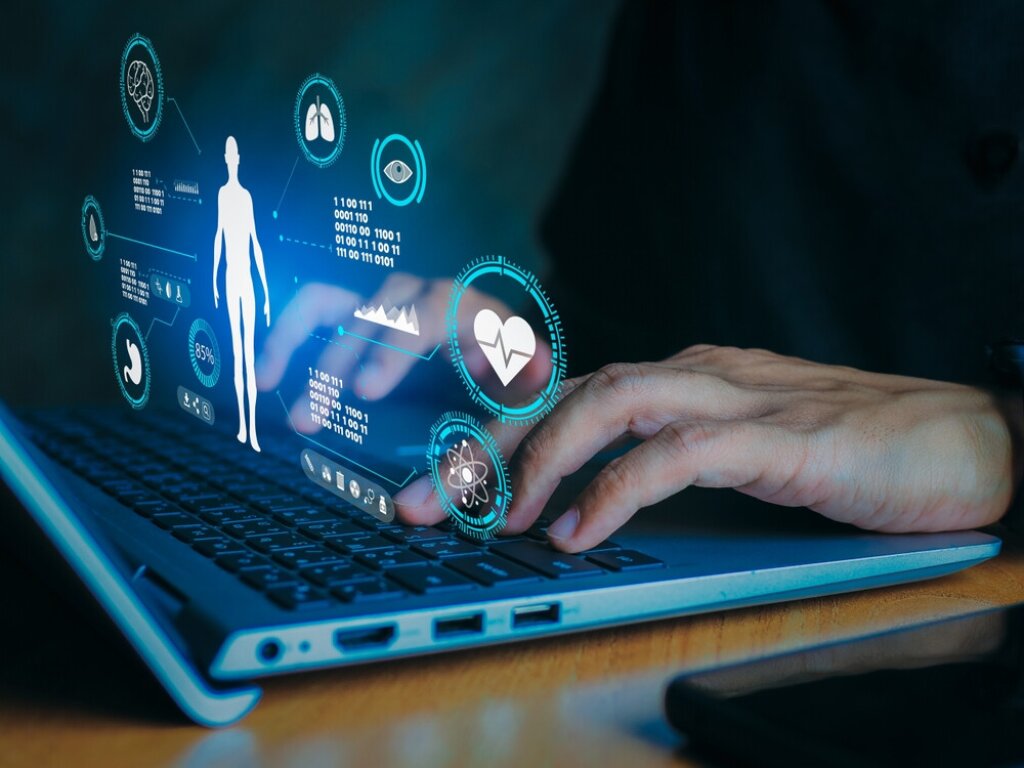De-identifying Health Data: Compliance and Privacy Practices
In the healthcare industry, protecting patient privacy is a critical aspect of managing sensitive information. With the surge in healthcare data collection, maintaining patient confidentiality is more important than ever.
One key method for safeguarding healthcare data is data de-identification. This practice involves transforming or removing identifiable elements from datasets, so they can no longer be traced back to an individual.
In this article, we’ll explore the role of data de-identification in protecting patient privacy to ensure regulatory compliance, and the techniques involved, such as data anonymisation.

What Is Data De-identification?
Data de-identification refers to the process of modifying or stripping datasets of personal identifiers, such as names, addresses and social security numbers, to make it impossible to link the data back to specific individuals.
De-identification is crucial in the healthcare industry, where large amounts of sensitive information, like medical histories and treatment details, are routinely handled.
There are two main methods used in data de-identification:
Anonymisation
In this method, personally identifiable information (PII) is completely removed. The data is altered to a point where it is virtually impossible to re-identify an individual.Pseudonymisation
In this technique, PII is replaced with artificial identifiers (such as codes or numbers), while retaining some information for possible re-identification under certain authorised conditions.
Both methods aim to reduce privacy risks while allowing healthcare providers and researchers to utilise data for public health analysis, medical research, and operational improvements.
Ensuring Patient Privacy and Healthcare Data Security
Patient privacy is at the heart of de-identification efforts. Health data contains some of the most personal and sensitive information, making it a target for cyberattacks and breaches. Failure to properly protect this data can result in identity theft, financial loss and other privacy violations, not to mention significant damage to the trust between patients and healthcare providers.
By applying de-identification techniques, healthcare organisations can share data for research, policy-making and population health analysis without compromising individual privacy.
However, this doesn’t mean data de-identification is a one-size-fits-all solution. As more advanced re-identification techniques emerge, it’s crucial that organisations continually update their data protection strategies.
To strengthen data security, healthcare entities should adopt robust encryption methods, access controls and secure data storage solutions alongside de-identification. These security practices are essential in creating layers of protection around health information.
De-identifying Health Data:
Compliance Practices with Video Redaction
Protecting patient privacy is a top priority in the healthcare sector, especially as the use of digital tools and video surveillance grows.
Healthcare providers often need to record or share footage for training, legal or operational purposes. However, these recordings frequently contain sensitive information that must be carefully handled to maintain data security and ensure regulatory compliance. One effective way to do this is through video redaction - a process that aligns with data de-identification principles.
What Is Video Redaction?
Video redaction involves removing or obscuring identifiable elements, such as faces, names, or medical charts, from video footage. In healthcare, video redaction helps protect patient privacy by ensuring that no identifiable information can be seen in the footage to make it compliant with privacy regulations like the Health Insurance Portability and Accountability Act (HIPAA) and the General Data Protection Regulation (GDPR).
Ensuring Video Compliance Through De-Identification
Video redaction is crucial for compliance in the healthcare industry. Under regulations like HIPAA, any healthcare data containing personally identifiable information (PII) or protected health information (PHI) must be de-identified before sharing. This applies to video recordings that could otherwise expose sensitive details about patients or staff.
By using specialised software to blur or block faces, name tags or any other identifiers, healthcare organisations can de-identify video content to eliminate the risk of privacy breaches.
The Importance of Data Security
Video redaction not only protects patient privacy but also strengthens overall data security. Redacted videos are safer to share with external stakeholders, such as law enforcement or researchers, without compromising patient confidentiality.
Video redaction is an essential tool for data de-identification in healthcare as it helps to balance the need for operational transparency with stringent privacy and compliance standards.
Regulatory Compliance in Healthcare Data
Healthcare data is subject to stringent regulations that govern how personal health information (PHI) is handled. In the U.S., HIPAA provides strict guidelines for the protection of PHI. De-identified data is largely exempt from HIPAA’s requirements, which allows for more flexibility in how it can be shared and used.
However, de-identification must be performed carefully to ensure full regulatory compliance. Under HIPAA, for example, data is only considered de-identified if either:
A qualified expert determines that the risk of re-identification is extremely low, or
All 18 types of identifiers (like names, phone numbers, faces and medical record numbers) are removed from the data.
In the European Union and the UK, GDPR provides similar guidelines for protecting personal data. Under GDPR, anonymised data is not subject to the same privacy protections as identifiable information. However, pseudonymised data may still fall under GDPR’s regulations since it can be re-identified under specific circumstances.
Healthcare organisations that handle patient data must also stay informed about local data protection laws, such as the California Consumer Privacy Act (CCPA) in the United States or similar legislation globally, to ensure that their data de-identification practices meet all applicable legal standards.
The Benefits of Data De-identification
Healthcare data that has been properly de-identified offers significant advantages, particularly when it comes to secondary uses, such as:
Research and Innovation
Researchers can access large datasets for medical studies and clinical trials without compromising patient privacy, to enable advancements in treatments and healthcare delivery.Public Health Initiatives
De-identified data can be shared among agencies and healthcare systems to track disease outbreaks, vaccination rates and other health trends in a secure manner.Operational Efficiency
Healthcare organisations can analyse de-identified data to improve their processes, reduce costs, and enhance the quality of care delivered to patients.
Challenges and Best Practices
Despite its many benefits, data de-identification does come with challenges.
One of the biggest concerns is the risk of re-identification. Advanced algorithms and increasing computing power can sometimes allow individuals to be re-identified from de-identified datasets, especially if other publicly available data is used in conjunction.
To address these concerns, healthcare organisations should follow these best practices:
Regularly Update De-identification Techniques
As re-identification risks evolve, so too should the methods of de-identification. New threats require continuous updates to algorithms and data processing techniques.Use Advanced Anonymisation Techniques
Techniques such as differential privacy, which introduces controlled noise into datasets, can significantly reduce the risk of re-identification while maintaining data utility.Combine De-identification with Strong Security Protocols
De-identification should be just one layer of your data protection strategy. Strong encryption, restricted access and thorough monitoring are essential for comprehensive healthcare data security.Conduct Frequent Risk Assessments
Regular risk assessments help identify potential vulnerabilities in data handling processes and ensure ongoing compliance with evolving regulations.Use AI-driven video redaction for automated compliance
Automated redaction is fast and reliable, and eliminates human error and possibilities of re-identification.
Conclusion: Medical Data
As healthcare data continues to grow in both volume and value, protecting patient privacy and ensuring data security remain top priorities for organisations.
Data de-identification plays a vital role in enabling the safe and compliant use of health data for research, public health efforts and operational improvements.
However, achieving success requires a commitment to best practices, staying current with legal requirements and proactively addressing privacy risks. By balancing these elements, healthcare organisations can leverage the benefits of data anonymisation while safeguarding the sensitive information entrusted to them.
Facit’s Video Redaction Solutions
Facit works with every type of business, so these use cases are not unusual to us. We help organisatons around the world to operate their different types of business while staying 100% compliant with prevailing privacy laws.
We provide fast, cost-effective post-event video redaction and live-redaction solutions. Please contact us for more information.



